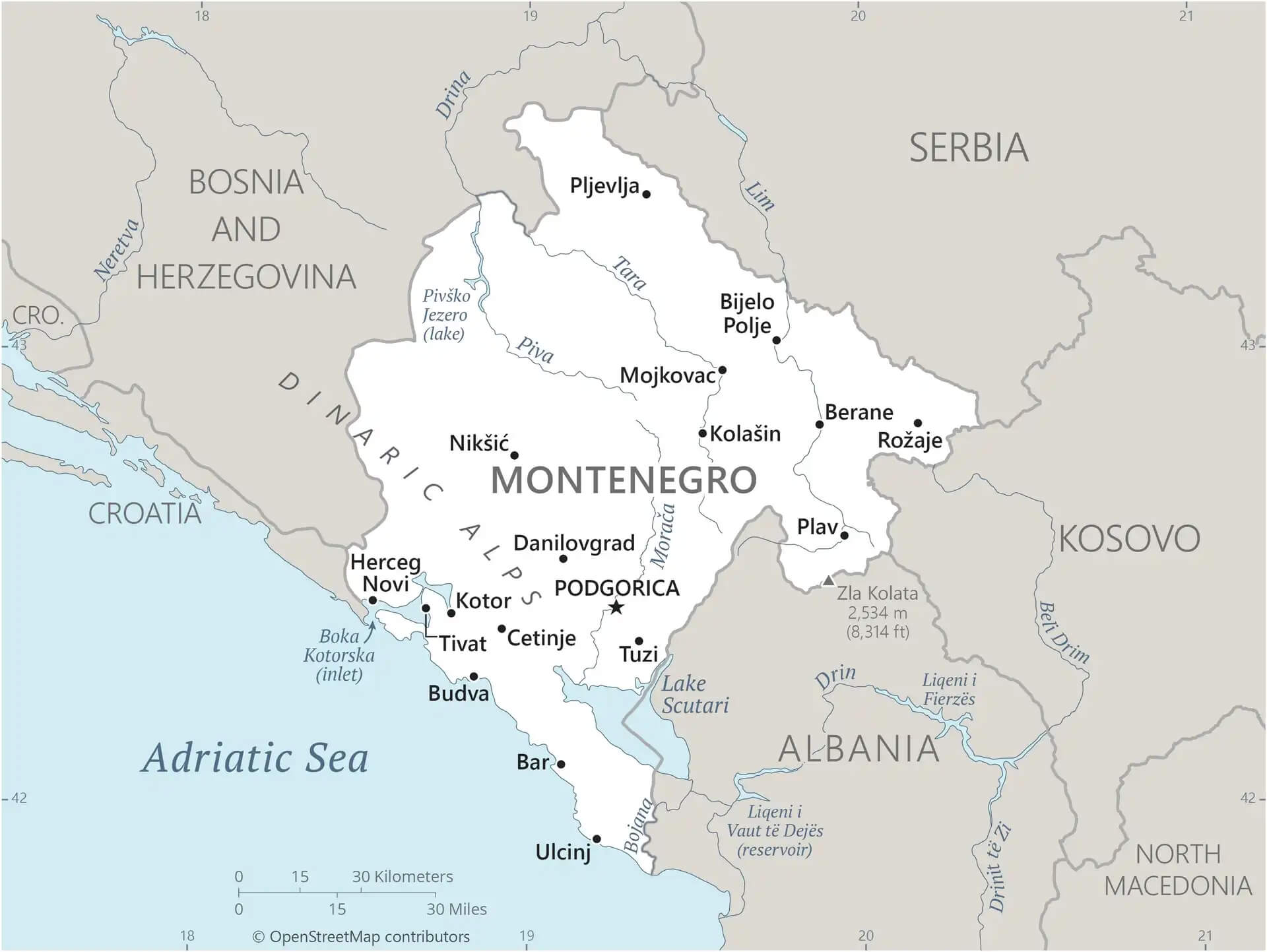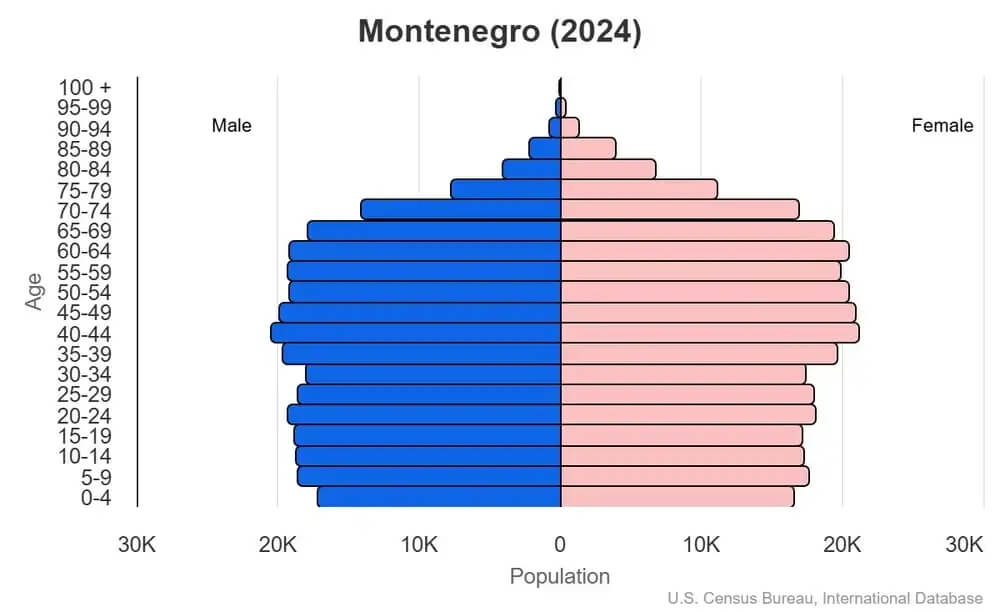World Book
Montenegro
World Book Index
74


With a score of 74, the country is ranked 50th out of 158 countries in the World Book ranking. (more information)
Introduction
Background
Under Ottoman control beginning in 1496, Montenegro was ruled by bishop princes until it became a secular principality in 1852. In 1918, Montenegro was absorbed by the Kingdom of Serbs, Croats, and Slovenes, which became Yugoslavia in 1929. When the latter dissolved in 1992, Montenegro first federated with Serbia but voted for independence in 2006. Montenegro became an official EU candidate in 2010 and joined NATO in 2017.
Geography
Area
total : 13,812 sq km
land: 13,452 sq km
water: 360 sq km
Climate
Mediterranean climate, hot dry summers and autumns and relatively cold winters with heavy snowfalls inland
Natural resources
bauxite, hydroelectricity
People and Society
Population
total: 599,849 (2024 est.)
Ethnic groups
Montenegrin 45%, Serbian 28.7%, Bosniak 8.7%, Albanian 4.9%, Muslim 3.3%, Romani 1%, Croat 1%, other 2.6%, unspecified 4.9% (2011 est.)
Languages
Serbian 42.9%, Montenegrin (official) 37%, Bosnian 5.3%, Albanian 5.3%, Serbo-Croat 2%, other 3.5%, unspecified 4% (2011 est.)
Religions
Orthodox 72.1%, Muslim 19.1%, Catholic 3.4%, atheist 1.2%, other 1.5%, unspecified 2.6% (2011 est.)
Population growth rate
-0.44% (2024 est.)
Government
Government type
parliamentary republic
Capital
name: Podgorica
Executive branch
chief of state: President Jakov MILATOVIC (since 20 May 2023)
head of government: Prime Minister Milojko SPAJIC (since 31 October 2023)
Diplomatic representation in the US
chief of mission: Ambassador Jovan MIRKOVIĆ (since 18 September 2024)
Diplomatic representation from the US
chief of mission: Ambassador Judy Rising REINKE (since 20 December 2018)
Economy
Economic overview
upper-middle-income, small Balkan economy; uses euro as de facto currency; reduced growth due to slowdown in tourism and industrial production; new impetus for EU accession under Europe Now government; energy price cap and declining food and services prices easing inflation rate
Real GDP (purchasing power parity)
$17.375 billion (2024 est.)
$16.862 billion (2023 est.)
$15.857 billion (2022 est.)
Real GDP per capita
$27,900 (2024 est.)
$27,000 (2023 est.)
$25,400 (2022 est.)
Exports
$3.629 billion (2024 est.)
$3.769 billion (2023 est.)
$3.177 billion (2022 est.)
Exports - partners
Italy 38%, Serbia 13%, Spain 6%, Slovenia 5%, Bosnia & Herzegovina 4% (2023)
Exports - commodities
electricity, aluminum, copper ore, aluminum ore, packaged medicine (2023)
Imports
$5.478 billion (2024 est.)
$5.167 billion (2023 est.)
$4.614 billion (2022 est.)
Imports - partners
Serbia 21%, China 10%, Germany 8%, Croatia 6%, Italy 6% (2023)
Imports - commodities
refined petroleum, cars, electricity, packaged medicine, aluminum (2023)
Human Development Index
The country's Human Development Index (HDI) is 0.862, ranking it 48th out of 193 countries tested. (more information)
World Happiness Report
The World Happiness Report ranked the country 51st out of 158 countries tested with a score of 6.188. (more information)



